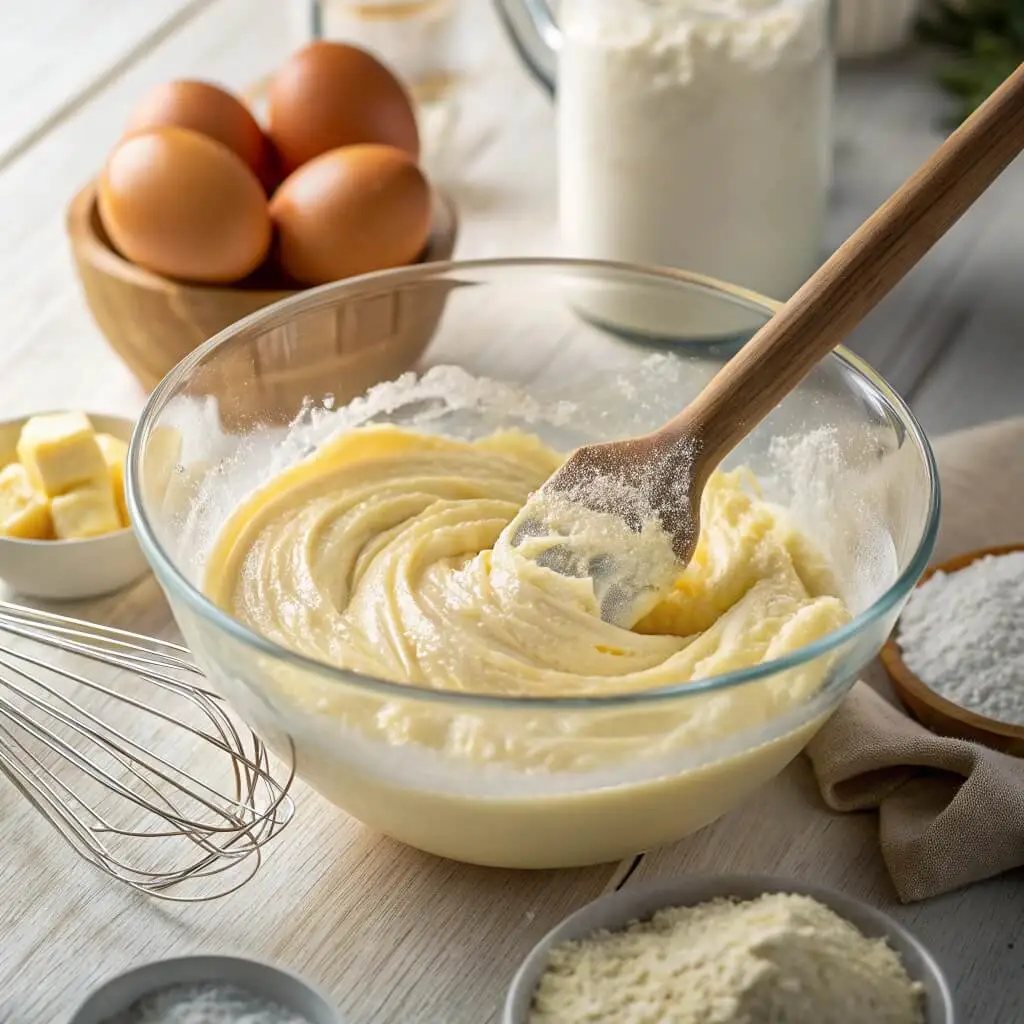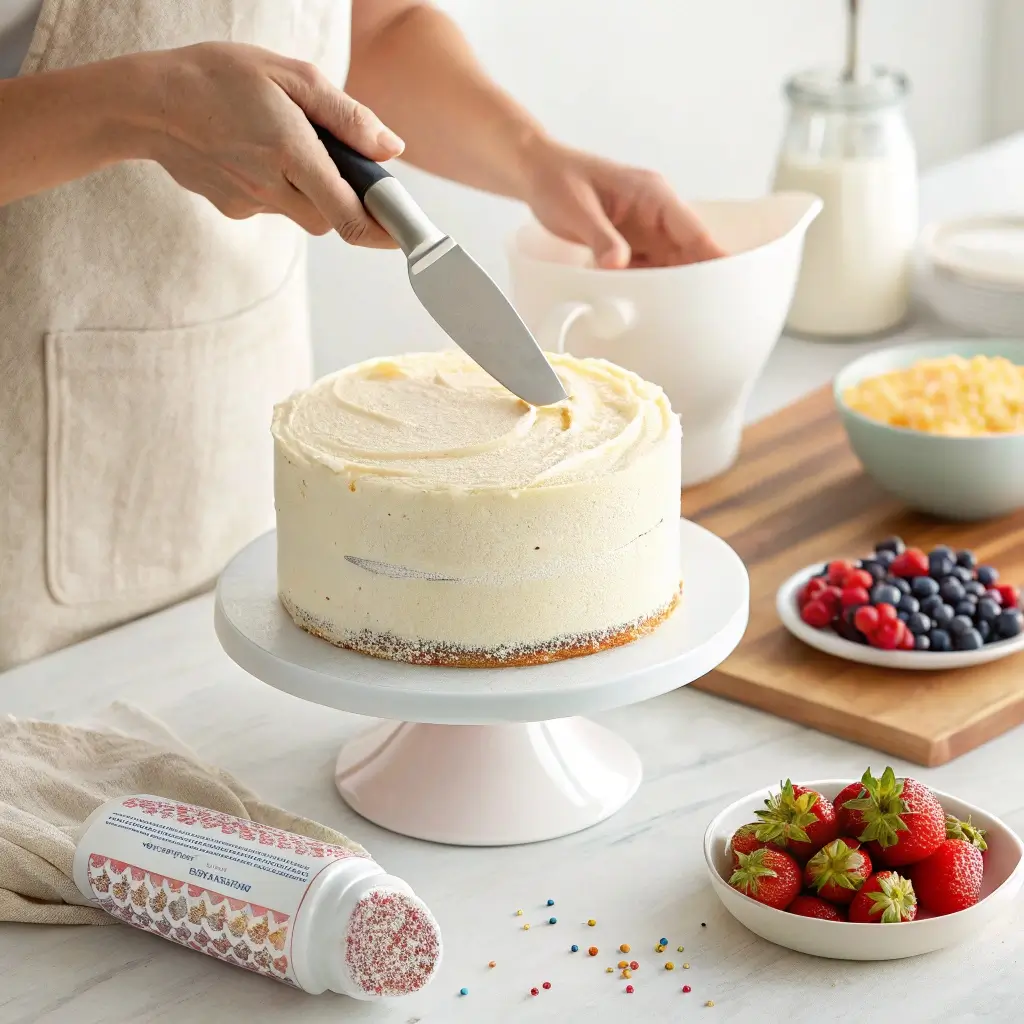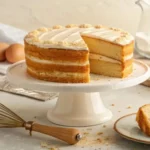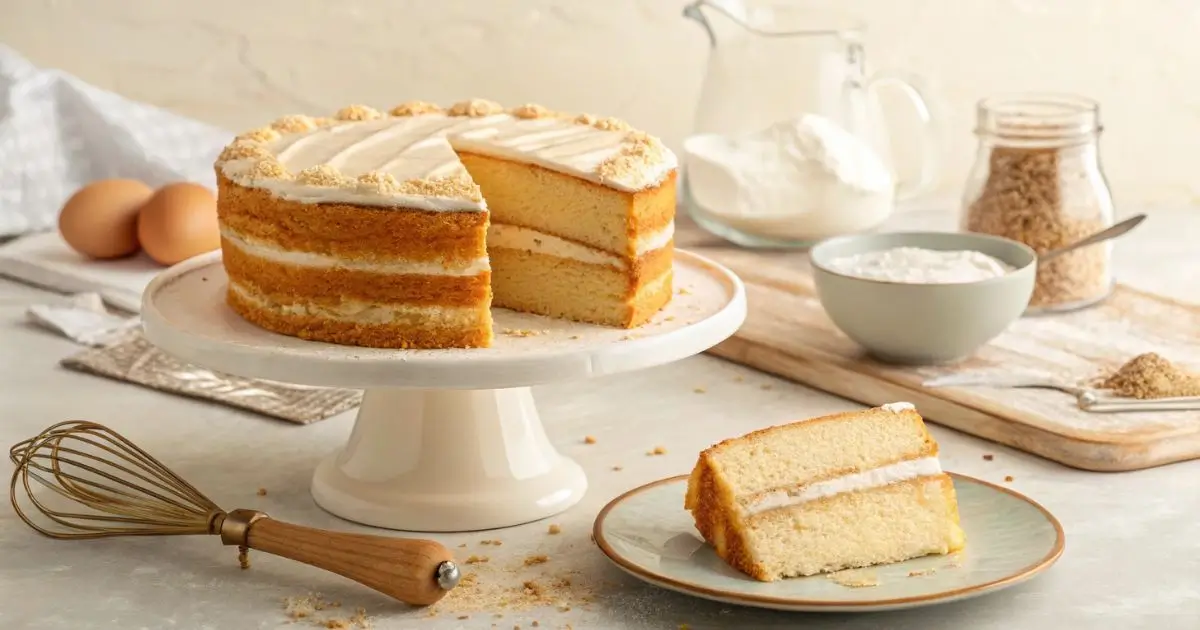Introduction
Baking a cake with a Home Economics Class Cake Recipe is an enjoyable and educational experience that helps you learn valuable skills, such as measuring ingredients, following instructions, and understanding the science of baking. This recipe makes learning the basics of cake-making fun and simple, perfect for any home economics class.
The Home Economics Class Cake Recipe is an ideal choice for anyone wanting to master the basics of baking while creating a delicious, homemade cake.
Table of Contents
Why Choose This Recipe?
This cake is an ideal base for beginners because it:
- Uses simple and common ingredients
- Requires no special equipment
- Teaches essential baking techniques, such as mixing, measuring, and baking
- Can be easily customized with different flavors and toppings
Whether you are taking a class or just want to improve your baking skills, this recipe is perfect.
Essential Ingredients for a Home Economics Class Cake Recipe
Before you start baking, make sure you have everything ready. This simple cake recipe uses basic ingredients that you likely already have in your kitchen.
Dry Ingredients:
- 2 cups all-purpose flour (for a soft, even texture)
- 1 ½ teaspoons baking powder (helps the cake rise)
- ½ teaspoon baking soda (adds lightness)
- ¼ teaspoon salt (enhances flavor)
Wet Ingredients:
- 1 cup granulated sugar (for the perfect sweetness)
- ½ cup unsalted butter, softened (adds richness)
- 2 large eggs (binds everything together)
- 1 teaspoon vanilla extract (for warm, aromatic flavor)
- ¾ cup milk (creates a smooth, moist batter)
Optional Additions:
- ½ cup chocolate chips for a sweet twist
- 1 teaspoon cinnamon for a warm spice flavor
- Zest of 1 lemon or orange for a citrusy kick
Pro Tip: Measure all ingredients accurately using measuring cups and spoons to ensure consistent results. Now that everything is prepped, let’s move on to the step-by-step instructions!
Step-by-Step Guide for the Perfect Home Economics Class Cake Recipe

Let’s dive into the baking process! Here’s how to make your cake from start to finish. These steps are simple, straightforward, and beginner-friendly.
1. Prepare Your Oven & Pan
- Start by preheating your oven to 350°F (175°C). This ensures your cake bakes evenly throughout.
- Grease your 9-inch round cake pan with butter or non-stick spray, or line it with parchment paper for easy removal after baking.
2. Mix Your Dry Ingredients
- In a medium-sized bowl, combine flour, baking powder, baking soda, and salt. Give it a quick whisk to make sure everything is evenly mixed.
- This step is crucial for an evenly risen cake with no lumps.
3. Cream the Butter & Sugar
- In a separate large bowl, beat the butter and sugar together using an electric mixer or whisk until the mixture is light and fluffy. This will take about 2-3 minutes.
- Creaming the butter and sugar helps incorporate air into the batter, which is what gives your cake a fluffy texture.
4. Add Eggs & Vanilla Extract
- Add your eggs one at a time, beating well after each addition to help bind the ingredients together.
- Stir in the vanilla extract to bring a delightful flavor that complements the sweetness of the cake.
5. Combine Wet and Dry Ingredients
- Gradually add the dry ingredients to the butter mixture, alternating with the milk. Start and finish with the dry ingredients.
- Gently mix until just combined—be careful not to overmix, or you’ll risk a dense cake.
6. Bake the Cake
- Pour the batter into your prepared cake pan and spread it evenly with a spatula.
- Bake the cake in your preheated oven for 25 to 30 minutes or until a toothpick inserted into the center comes out clean.
7. Cool the Cake
- Let the cake sit in the pan for about 10 minutes before transferring it to a wire rack to cool completely.
- Once fully cooled, the cake is ready to be enjoyed as is or frosted to your liking.
Pro Tip: For an extra-soft texture, try brushing the warm cake with a bit of milk just after baking. This simple trick will help keep the cake moist.
Now you’re all set to enjoy your delicious homemade cake—let’s move on to the fun part: variations and tips for making it your own!
How to Make Your Cake Even Better
Here are some tips for the best results:
- Use fresh ingredients—old baking powder can prevent the cake from rising.
- Weigh ingredients instead of using cups for more accuracy.
- Add a pinch of salt to balance the sweetness.
- If your cake tends to be dry, add a tablespoon of vegetable oil for extra moisture.
Delicious Variations to Try

This recipe is a great base that you can modify according to your preferences:
Chocolate Cake
- Replace half a cup of flour with cocoa powder.
- Add chocolate chips for extra indulgence.
Lemon Cake
- Add the zest and juice of one lemon for a tangy flavor.
- Prepare a lemon glaze to enhance the taste.
Coconut Cake
- Mix in half a cup of shredded coconut.
- Use coconut extract for a stronger flavor.
Common Mistakes to Avoid
Dry cake: It may have baked too long or contained too much flour. Start checking for doneness at 25 minutes.Cake didn’t rise: Ensure your baking powder is fresh and don’t overmix the batter.Cake stuck to the pan: Always grease and flour the pan or use parchment paper.
Learning from Experts
For students or anyone looking to take their baking skills to the next level, it’s always beneficial to learn from industry professionals. The American Culinary Federation offers valuable resources and professional tips that can enrich your home economics class experience and improve your baking techniques.
How to Store Your Cake
- At room temperature: Up to three days in an airtight container.
- In the refrigerator: Up to five days, especially if frosted.
- In the freezer: Up to three months, wrapped tightly in plastic wrap.
Tip: To restore moisture after freezing, let the cake thaw at room temperature for two hours.
Best Frostings and Pairings
Frosting Ideas
- Buttercream frosting: A classic and creamy choice
- Chocolate ganache: Perfect for chocolate lovers
- Cream cheese frosting: Light and tangy, great for balancing sweetness
Best Drinks to Serve with This Cake
- Black or green tea for a delicate contrast
- Strong coffee to enhance the cake’s sweetness
- Cold milk for a comforting combination
Why This Recipe is Perfect for Home Economics Classes
Teaches fundamental baking skills: A great introduction to measuring, mixing, and baking.Easy to make: With simple steps, even beginners can succeed.Customizable: Encourages creativity with different flavors and textures.A great base for other recipes: Can be used for cupcakes, layer cakes, or roulades.
Conclusion
This Home Economics Class Cake Recipe is the perfect way to learn baking basics while creating a delicious homemade cake. Whether you’re in a class or baking at home, this guide ensures you can confidently follow the steps and achieve a successful, tasty result every time. Embrace the art of baking with this Home Economics Class Cake Recipe and enjoy a sweet, rewarding experience!
Home Economics Class Cake Recipe

A freshly baked cake made from a Home Economics Class Cake Recipe, topped with smooth frosting and decorative sprinkles.
Dry Ingredients:
- 2 cups all-purpose flour (for a soft, even texture)
- 1 ½ teaspoons baking powder (helps the cake rise)
- ½ teaspoon baking soda (adds lightness)
- ¼ teaspoon salt (enhances flavor)
Wet Ingredients:
- 1 cup granulated sugar (for the perfect sweetness)
- ½ cup unsalted butter (softened (adds richness))
- 2 large eggs (binds everything together)
- 1 teaspoon vanilla extract (for warm, aromatic flavor)
- ¾ cup milk (creates a smooth, moist batter)
Optional Additions:
- ½ cup chocolate chips for a sweet twist
- 1 teaspoon cinnamon for a warm spice flavor
- Zest of 1 lemon or orange for a citrusy kick
Prepare Your Oven & Pan
- Start by preheating your oven to 350°F (175°C). This ensures your cake bakes evenly throughout.
- Grease your 9-inch round cake pan with butter or non-stick spray, or line it with parchment paper for easy removal after baking.
Mix Your Dry Ingredients
- In a medium-sized bowl, combine flour, baking powder, baking soda, and salt. Give it a quick whisk to make sure everything is evenly mixed.
- This step is crucial for an evenly risen cake with no lumps.
Cream the Butter & Sugar
- In a separate large bowl, beat the butter and sugar together using an electric mixer or whisk until the mixture is light and fluffy. This will take about 2-3 minutes.
- Creaming the butter and sugar helps incorporate air into the batter, which is what gives your cake a fluffy texture.
Add Eggs & Vanilla Extract
- Add your eggs one at a time, beating well after each addition to help bind the ingredients together.
- Stir in the vanilla extract to bring a delightful flavor that complements the sweetness of the cake.
Combine Wet and Dry Ingredients
- Gradually add the dry ingredients to the butter mixture, alternating with the milk. Start and finish with the dry ingredients.
- Gently mix until just combined—be careful not to overmix, or you’ll risk a dense cake.
Bake the Cake
- Pour the batter into your prepared cake pan and spread it evenly with a spatula.
- Bake the cake in your preheated oven for 25 to 30 minutes or until a toothpick inserted into the center comes out clean.
Cool the Cake
- Let the cake sit in the pan for about 10 minutes before transferring it to a wire rack to cool completely.
- Once fully cooled, the cake is ready to be enjoyed as is or frosted to your liking.
Nutrition Information (Per Serving):
- Calories: 250
- Total Fat: 10g
- Saturated Fat: 6g
- Cholesterol: 55mg
- Sodium: 180mg
- Total Carbohydrates: 35g
- Sugars: 18g
- Protein: 4g
- Fiber: 1g
FAQs
Can I bake a cake from a Home Economics Class Cake Recipe without an oven?
Yes! You can use a stovetop, rice cooker, or microwave to bake your cake.
How do I know if my cake is fully baked?
Put a toothpick in the center – if it comes out clean, the cake is ready.
Can I use oil instead of butter in my cake?
Yes, but it may slightly change the flavor and texture.
Why did my cake turn out dry?
It may have been baked too long or too much flour was used. Try reducing baking time and measuring carefully.
Can I freeze a frosted cake made from a Home Economics Class Cake Recipe?
Yes! Be sure to wrap your cake well to prevent freezer burn.
Have you tested our recipe yet?
There are no reviews yet. Be the first one to write one.

